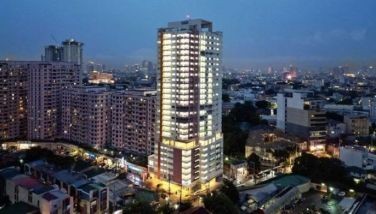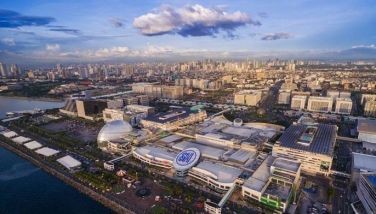‘Consumption now in shallow recession’

Never mind the jet setters who fly in and out of the country on their private planes or the über wealthy who while their time in exclusive golf courses or in art auctions or galleries. They’re not really counted.
But the rest of the population, middle-class households included, are feeling the pinch and this is the reason why consumption spending in the Philippines continues to decline or, as United Kingdom think tank Pantheon Macroeconomics puts it, “is now in a shallow recession.”
Thus, for all the cheers and jubilation and big sighs of relief over our latest second quarter economic growth of 6.3 percent – faster than 4.3 percent a year ago – there is an alarming reality that the Marcos administration must work on – the sharp decline in consumption spending, which is a major engine of our economy.
According to the Philippine Statistics Authority (PSA), household spending, while it grew year-on-year by 4.6 percent in the second quarter, actually decelerated from the 5.5 percent growth in the same quarter of the previous year.
Households spent only on the usual necessities. Contributors to second quarter household consumption were miscellaneous goods and services (7.8 percent); transport (11.8 percent) and housing, water, electricity, gas and other fuels (six percent).
Noticeable, however, is that households spent significantly less on clothing and footwear during the period.
“The only household final consumption expenditure sub-item to post a negative growth rate during this period was clothing and footwear, which declined by 4.8 percent,” according to the PSA.
In the first quarter of the year, consumption spending was at 4.58 percent, compared to 6.4 percent in the same period in 2023.
This isn’t surprising, given that inflation this year has remained topsy-turvy: 2.8 percent in January; 3.4 percent in February, 3.7 percent in March; 3.8 percent in April; 3.9 percent in May; 3.8 percent in June and 4.4 percent in July, the highest so far for the year and since October 2023.
Beyond the numbers, what these really mean are more expensive goods and services – food, transport, gasoline, etc. for Filipinos.
For many of us, we now leave the supermarket or the palengke with smaller bags than before, making sure to buy only the basic stuff or those that we really need versus those that we sometimes want or crave.
Prices of food and other necessities have gone up dizzyingly high.
Perhaps dining out has also become less frequent for many families, especially with the rising cost of food.
Because of the decline in household consumption, Pantheon Macroeconomics expects the economy to expand at a slower pace of 5.4 percent this year compared to the 5.5 percent in 2023.
Although this is higher than a previous forecast of 5.2 percent, the 5.4 percent forecast is below the government’s growth targets for this year and next year at six to seven percent and 6.5 to 7.5 percent, respectively.
The UK think tank expects economic growth to slow down because of the gloomy outlook on consumption spending for the rest of the year.
“The key takeaway from the second quarter report is that private consumption has entered a technical, if shallow, recession. This spending fell by a further 0.1 percent quarter-to-quarter, extending modestly the 0.2 percent slip in the first quarter and keeping the year-over-year rate at a decade-plus low of 4.6 percent – despite a helpful base effect – if we exclude the COVID years,” Pantheon Macroeconomics said.
Consumer confidence
“Moreover, consumer confidence is waning, spending intentions remain depressed and remittances in peso terms are still not rising fast enough to provide a meaningful lift,” the think tank also said.
As such, the government needs to step up efforts to create an environment that would boost consumption spending, including lowering prices of goods and services through interventions that will improve food supply; boosting investments to improve productivity and creating jobs so people have money to spend.
A reduction in interest rates would also slash borrowing rates and help boost spending.
Alongside this, government spending through critical infrastructure projects is also important, although I don’t see this accelerating in the next two to three years, given the Marcos administration’s slower fiscal consolidation path.
With no new taxes and reliance on debt, it would take time for the government to bring down the budget deficit.
Fragile fiscal health
Clearly, the administration is facing serious challenges in managing the country’s fiscal health, but there are solutions that can be implemented, including eradicating corruption and downsizing the bureaucracy.
Spending on growth areas rather than on fat paychecks, unnecessary trips abroad or fashion shows and parties in the guise of promoting culture can also help.
A former finance secretary said the situation is alarming.
The good news is that we’re nowhere near the Great Depression or even the severe and traumatic crises of decades past.
But then again, we really shouldn’t be. The path should always be onward and toward a better and brighter future.
Besides, didn’t President Marcos Jr. promise that life would be better for Filipinos under his administration with more jobs, tax breaks and rice at P20 per kilo?
* * *
Email: [email protected]. Follow her on Twitter @eyesgonzales. Column archives at EyesWideOpen on FB.
- Latest
- Trending



























